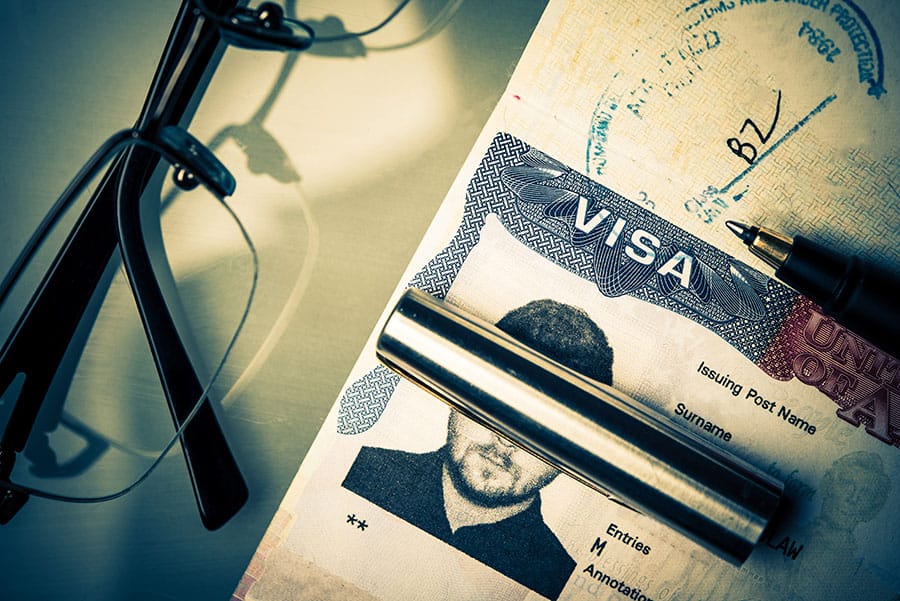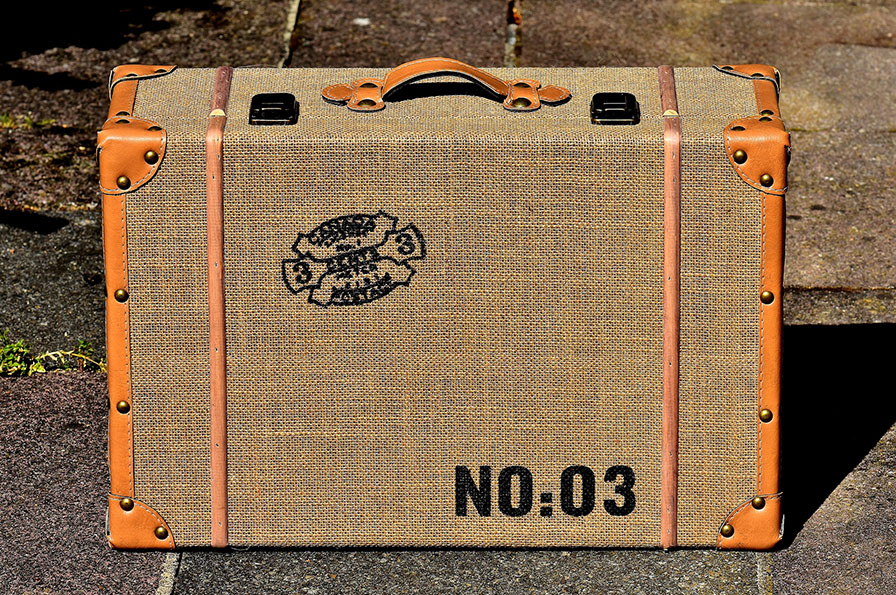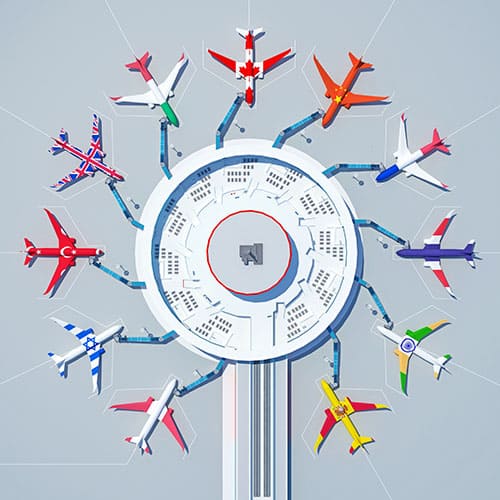
When it comes to travel, one of the most dreaded circumstances is arriving at the airport and having to face extremely long lines, especially during busy times of the year.
The best case scenario, you to have to arrive hours early and stand begrudgingly in line as they filter through tons of people ahead of you, doing the usual routine: taking off belts and shoes, removing personal belongings, going through a body scanner, and ensuring compliance with the 3-1-1 rule.
The 3-1-1 rule dictates that:
- no person can have a container larger than 3.4 oz for their liquids
- the liquids must be fit inside of a bag no larger than 1 qt.
- there can only be one bag per 3.4oz container
All of this is done by TSA, or the Transportation Security Administration. They are the Transportation Security Administration, an agency of the US Department of Homeland Security and mainly concerned with air travel.
Luckily, with a bit of effort and a modest signup fee which covers the background check, you can usually skip the lines and save time by signing up for TSA Precheck (noted as usually because the TSA has mentioned that in spite of the program, anyone can be still be subject to additional screening at anytime).
TSA Precheck

TSA Precheck (often times denoted as TSA Pre✓) denoted TSA Pre✓ is the first way you can save yourself time and potential hassle when traveling. TSA Precheck takes place when you are departing from designated airports in the US.
It’s worth noting that this is the only time you can use TSA Precheck. It doesn’t apply when you’re entering the US or traveling between other countries – we’ll cover specific programs that allow you to speed up the process during those instances as well.
While TSA Precheck was initially only offered for domestic flights and tested at 4 airports, it’s now available for most international flights and is being offered at over 160 airports within the US.
There are no age restrictions to obtaining TSA Precheck but children 12 and under who are traveling with a family member who is a member of TSA Precheck can also participate in the expedited screening processes.
Frequent Flyer Program
The first way to be eligible for TSA Precheck is to be active member of a partner airline’s Frequent Flyer Program.
Many times, you may be given a chance to opt-in for TSA Precheck as a result, but it would only be applicable when you are flying on that specific airline.
Known Traveler Number
The other way to become TSA Precheck approved is to obtain a “Known Traveler Number”, or KTN for short.
TSA Precheck lasts for 5 years and costs currently $85. Eligible participants are limited to US citizens, US nationals, and Lawful Permanent Residents.
Essentially, they are looking for people who have clean records (as they will take fingerprints and run a number of background checks), as well as people who make it clear of any government watchlists.
Typically, enrollment takes up to 3 weeks to process so make sure to give yourself plenty of time if you are enrolling before your next flight.
If you travel at least a few times a year, it’s a good idea to check out TSA Precheck. The amount of time it will save you just by skipping the lines should pay itself after only a few trips.
However, if you only travel once a year or less than it may not be worth it to invest in.
Once you’re good to go, just be sure to book flights from both airports and airlines that are TSA Precheck approved. Enjoy expedited service and screening next time you travel from an airport within the United States.
The expedited screening comes in the form of separate, dedicated lanes and kiosks that have many less travelers, and offer speeded up processing for the ones that are there (not always having to remove your belts and shoes, 3-1-1 liquid exceptions, etc.)
What About Traveling Back into the US?

As you may have caught on above, TSA Precheck only covers you when you are departing from approved airports within the United States. That means it doesn’t cover you for travel from airports outside of the United States, or even when you are trying to re-enter the United States.
That means you’ll have to apply to other programs if you are interested in maintaining the same level of expedited screening that TSA Precheck provides.
Luckily, there are a number of Trusted Traveler programs that function similarly, and some even include TSA Precheck as well. We’ll begin to cover them below.
First Trusted Traveler Program: Global Entry
Since TSA Precheck covers you when you are leaving from an airport in the US (whether you’re travelling domestically or internationally), Global Entry is one of the programs that covers you when you come back into the US from an outside country. Whereas TSA Precheck is maintained by the Transportation Security Administration, Global Entry is a program of US Customs and Border Protection (CBP).
Eligibility and the application for Global Entry is a bit more rigorous than TSA Precheck. The good thing about Global Check is that it includes TSA Precheck, so you are covered for expedited processing when departing and arriving at the selected airports within the United States.
First, the fee is a bit more expensive: rather than the $85 you face for TSA Precheck, Global Entry costs $100. In addition to the application fee, there is also a fairly rigorous background check and in-person interview that you must attend.
In-person interviews are generally held in the capital of each state, some major cities, and around or in some major airports. Like TSA Precheck, it is good for 5 years once you pass.
For Global Entry, you enter the lane for special kiosk processing. After presenting a machine readable passport, you provide your fingerprint and declare customs – afterwards, you are good to go!
Importantly, Global Entry is open to citizens outside of the United States as well. Those that are citizens of Argentina, India, Colombia, the United Kingdom, Germany, Panama, Singapore, South Korea, Switzerland, and Taiwan may all enroll in the Global Entry program to garner its benefits.
As always, it is still only applicable for entering the United States and doesn’t apply when traveling between other countries outside of the US.
The most common reason for Global Entry denying applications is due to incomplete or inaccurate information – so be sure to fill out everything completely and accurately when filling out the application!
Other reasons are if a person was found to be in violations of customs in any country, having been convicted of a criminal offense, or are the subject of an ongoing investigation.
Trusted Traveler Programs for Traveling to Canada and Mexico
There’s two very popular programs for those that are looking to travel north or south of the border. The first one is called NEXUS.
NEXUS
NEXUS is open to those that are citizens or lawful permanent residents of the United States or Canada.
Travel into the US or Canada from either country is greatly sped up by enrolling in the NEXUS program. Like TSA Precheck and Global Entry, applicants are eligible for 5 years once enrolled. Another benefit to NEXUS is that it comes in at half the price of Global Check, at only $50.
However, it also requires visiting an enrollment center for an interview, fingerprinting, and verifying your ID.
It’s worth noting that if you are enrolled in NEXUS, you don’t need to enroll in TSA Precheck as you are already covered. But, that coverage is limited to entering/leaving the USA via Canada.
It is advantageous to enroll in NEXUS if you live in one of the northern US states or Canada, or travel to Canada frequently. Its enrollment centers are relatively limited compared to Global Check: they are mostly limited to northern states like Washington, Montana, upstate New York, and Maine.
The biggest advantage to use NEXUS is that it comes with the benefits of Global Entry and TSA Precheck and it only costs currently $50. Most noteworthy, is that it is free for children under 18.
Opt for NEXUS if you live near an enrollment center on the Canadian border as it is the only way to obtain it and plan on traveling to and from Canada frequently.
Otherwise, Global Entry is more attainable for those not living on the border as there is likely an enrollment center more close to you.
SENTRI
The last Trusted Traveler Program we’ll review for citizens doing normal travel is SENTRI. Secure Electronic Network for Travelers Rapid Inspection (SENTRI) allows travelers into the United States via Mexico to use dedicated lanes at Southern Land Border Ports. Like the other Trusted Traveler Programs, an in-person interview, fingerprinting, and background check are required.
Other Traveler Programs: FAST (Commercial Truck Driving)
It is worth noting that FAST is a program that works for those driving low-risk shipments over the border by using designated lanes. It works for both the Canadian and Mexican borders and is primarily used to speed up shipment of goods commercially.
It’s important to note that every link in the supply chain of goods has to be certified under the Custom-Trade Partnership Agreement against Terrorism, or C-TPAT for short.
Which Program is Best for You?
For most people, Global Entry is likely going to be the best option to go with. Not only will it allow you to depart your airport faster since it is packed with TSA Precheck, but it allows you to re-enter the country at an expedited rate as well.
As it only currently costs $15 more than TSA Precheck, and lasts the same time period of 5 years, it’s definitely worth the marginally extra few dollars.
Consider NEXUS the cheaper option of Global Entry if you live near the Canadian border and near an enrollment center.
It essentially comes with the same benefits of Global Entry but the only downside is you have enroll at one of the few locations. If you do find one that’s within an hour drive or so, it’s definitely worth the opportunity as it is currently $50 compared to Global Entry’s $100 application fee.
TSA Precheck Availability in Other Countries
Perhaps you’re not from the US and are wondering if your country has a system similar to TSA Precheck or Global Entry that allows you to undergo a pre-screening process in return for much faster screening procedures when you’re at the airport.
Fortunately, a number of countries have their own programs that allow for shorter queues and faster processing at the airport. Before getting into them, it’s also worthy to note that even some countries that don’t have an official precheck, allow passengers to pay extra to access shorter lines.
SmartGate, developed by the Australian Border Force, functions very similar to the US version and is available for those traveling to or from Australia via the US, Canada, France, Ireland, New Zealand, Sweden, and Singapore. Germany has Easypass, for automated border patrol.
In addition, Hong Kong, Japan, Mexico, Taiwan, and South Korea all have their own forms of analogous systems to allow for easier entry. The requirement to being eligible for each vary as widely as having iris scans, fingerprints taken, and “self checkout” via kiosks.
Many are relying on new, facial recognition technology which when fails, utilizes fingerprints as a backup.
Automated systems such as these the standard Trusted Traveler Programs that the US enables has greatly sped up travel for those who put in the small amount of work beforehand.
If you are someone who travels even just a couple of times per year, it is definitely worth looking into enrolling into one of these programs ahead of time: skip the line and be ensured you will catch your next flight even if you didn’t arrive at the airport hours and hours ahead of time.

